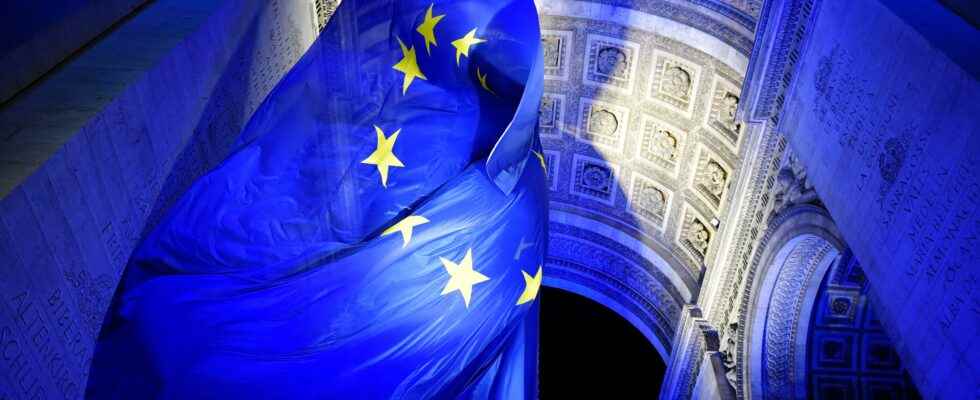“Unite or die.” The formula of the writer and politician Gaston Riou is not recent – it is the title of his work published in 1929 – but it sums up the dreams and setbacks of the European project. The dream is that of the construction of a political Europe, drawn aloud by Aristide Briand on September 5, 1929 at the tribune of the League of Nations. The President of the Council – who was the prefacer of Gaston Riou’s essay – evoked that day “the creation of a kind of federal link between the peoples of Europe in order to establish an effective system of security, cooperation and agreement between countries. At these words, applause broke out in the Salle de la Réformation in Geneva, but it did not last. The worm is already in the European fruit, and the lyrical flights of convinced federalists will not curb the warmongering ardor and the rise of the nationalists (1) on the Old Continent.
A century later, Europe is once again faced with the same dilemma, “unite or die”. Unite, to face the rise of threats that arise from all sides. The war in Ukraine, which is reviving fear of the atomic bomb – according to an Ipsos survey, 48% of those questioned consider the use of nuclear weapons likely (2). The energy crisis, which acts like an electric shock in Europe after years of culpable naivety in the face of a divisive and manipulative Vladimir Putin. But also the economic crisis, into which our countries are inexorably sinking, the IMF predicting recession for more than half of the European Union in 2023.
Not to mention inflation and debt, which eat away at public accounts and household money, especially the most vulnerable. The rise of the radical right (Italy, Hungary, Poland, Sweden, France…) with their identity and demagogic recipes. The fear for the European Union of a gradual disappearance in the confrontation of the two world superpowers, China and the United States. Because the war in Ukraine has showered the wishes for strategic autonomy nourished by Paris and invalidated in passing the diagnosis drawn up by Emmanuel Macron of NATO’s state of brain death. Let it be said, Uncle Sam is always watching the grain in Europe and monetizing his support at a high price! China is scary: its disastrous management of the Covid epidemic, the ever-increasing pressure exerted on Taiwan, the multiplication of trade conflicts and its alliance with Putin’s Russia have ended up creating a state of generalized suspicion in Europe…
“Our Europe was full of dangerous currents”
A century ago, when the German industrialist and politician Walther Rathenau was assassinated in Berlin on June 24, 1922, Stefan Zweig detected “the beginning of Germany’s misfortune, of Europe’s misfortune”. In his memoirs, the Austrian writer already perceived that “beneath its apparently peaceful surface, our Europe was full of dangerous currents” (3). The last days of 1922 saw the building of the Soviet Union, while in January 1923 the first National Socialist Party Congress was held in Munich.
A century later, faced with their responsibilities in the face of the invasion of Ukraine, Europeans have chosen unity. Admittedly, misunderstandings persist and misunderstandings remain gaping. But faced with the return of tragic history, the Twenty-Seven, invested with a democratic and peace project, were able to speak with one voice and align essential support for kyiv. This European moment will have to continue in 2023, whatever the cost. To support the Ukrainian people, subjected every day to a deluge of Russian bombs. In the name of European values. As Aristide Briand said about the Locarno agreements, signed in 1925, notably by Arthur Chamberlain, Mussolini, Gustav Stresemann: “I went there, they came, and we talked about Europe”. In 2023, we will have to talk about Europe again, in Paris, Berlin, kyiv or Stockholm, the seat of the new rotating presidency of the European Union for six months.
- Read 20th Century World History, under the direction of Nicolas Beaupré and Florian Louis (PUF 2022).
- https://www.ipsos.com/en/ipsos-global-predictions-2023
- The Murdered Republic, Weimar 1922, by Alexis Lacroix, (Cerf 2022).
